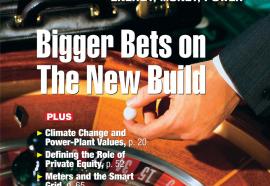Mitigating "Mandated" Rate Hikes
How to develop balanced revenue-backed financing to manage the impacts of governmental mandates.
Severe upward pressure on electric rates after a decade of stability has regulators, legislators, utility executives, consumer advocates, and myriad other stakeholders searching for solutions. Revenue-backed financing can mitigate many of these mandate-driven rate increases significantly. These programs must, however, be designed to eliminate the inefficiencies and inequities that can be associated with revenue set-aside programs.








